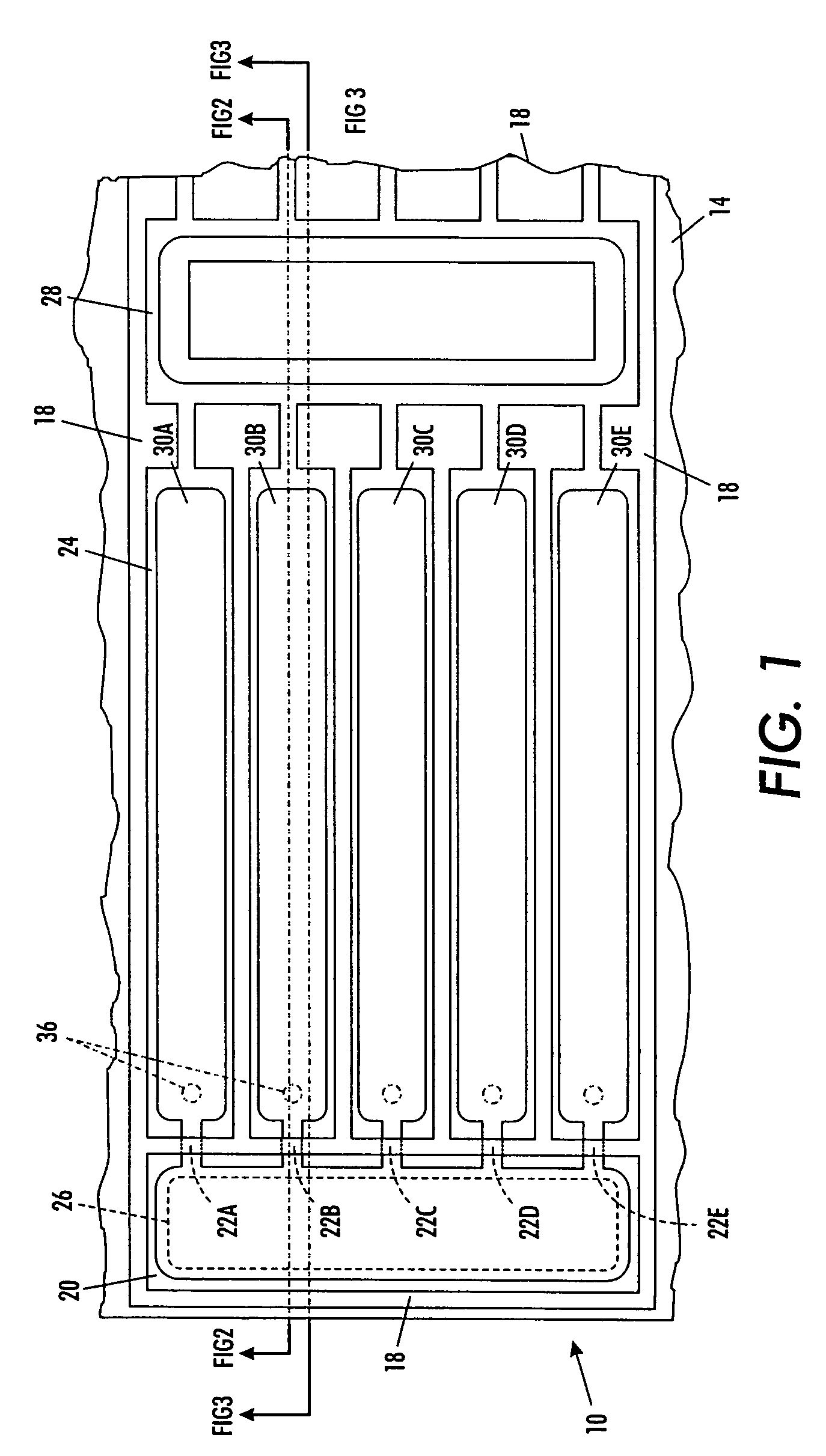Pressure compensation structure for microelectromechanical systems
a technology of microelectromechanical systems and pressure compensation structures, which is applied in the field of microelectromechanical systems, can solve the problems of changing device performance and/or device failure, sealing actuator cavities in fluidic mems that are susceptible to pressure variations, and closed chambers of mems devices,
- Summary
- Abstract
- Description
- Claims
- Application Information
AI Technical Summary
Benefits of technology
Problems solved by technology
Method used
Image
Examples
Embodiment Construction
[0021]For the purposes of promoting an understanding of the principles of the disclosure, reference is now made to the embodiments illustrated in the drawings and described in the following written specification. No limitation to the scope of the disclosure is intended by these particular depictions and their descriptions.
[0022]A top view of one embodiment of a fluidic MEMS device 10 is shown in FIG. 1. The device 10 includes a substrate 14. There are three main MEMS structure regions on top of substrate 14. There regions are a pressure compensating region 20, an actuator area 24, and an inlet area 28. The substrate may be made from a suitable substrate material for a particular application, such as silicon, and the tall sidewalls 18 that are constructed on top of the silicon substrate may be made of a suitable material, such as nickel. Within actuator area 24 are a plurality of rigid walls that extend across the width of the area to divide the actuator area into a plurality of actu...
PUM
 Login to View More
Login to View More Abstract
Description
Claims
Application Information
 Login to View More
Login to View More - R&D
- Intellectual Property
- Life Sciences
- Materials
- Tech Scout
- Unparalleled Data Quality
- Higher Quality Content
- 60% Fewer Hallucinations
Browse by: Latest US Patents, China's latest patents, Technical Efficacy Thesaurus, Application Domain, Technology Topic, Popular Technical Reports.
© 2025 PatSnap. All rights reserved.Legal|Privacy policy|Modern Slavery Act Transparency Statement|Sitemap|About US| Contact US: help@patsnap.com



